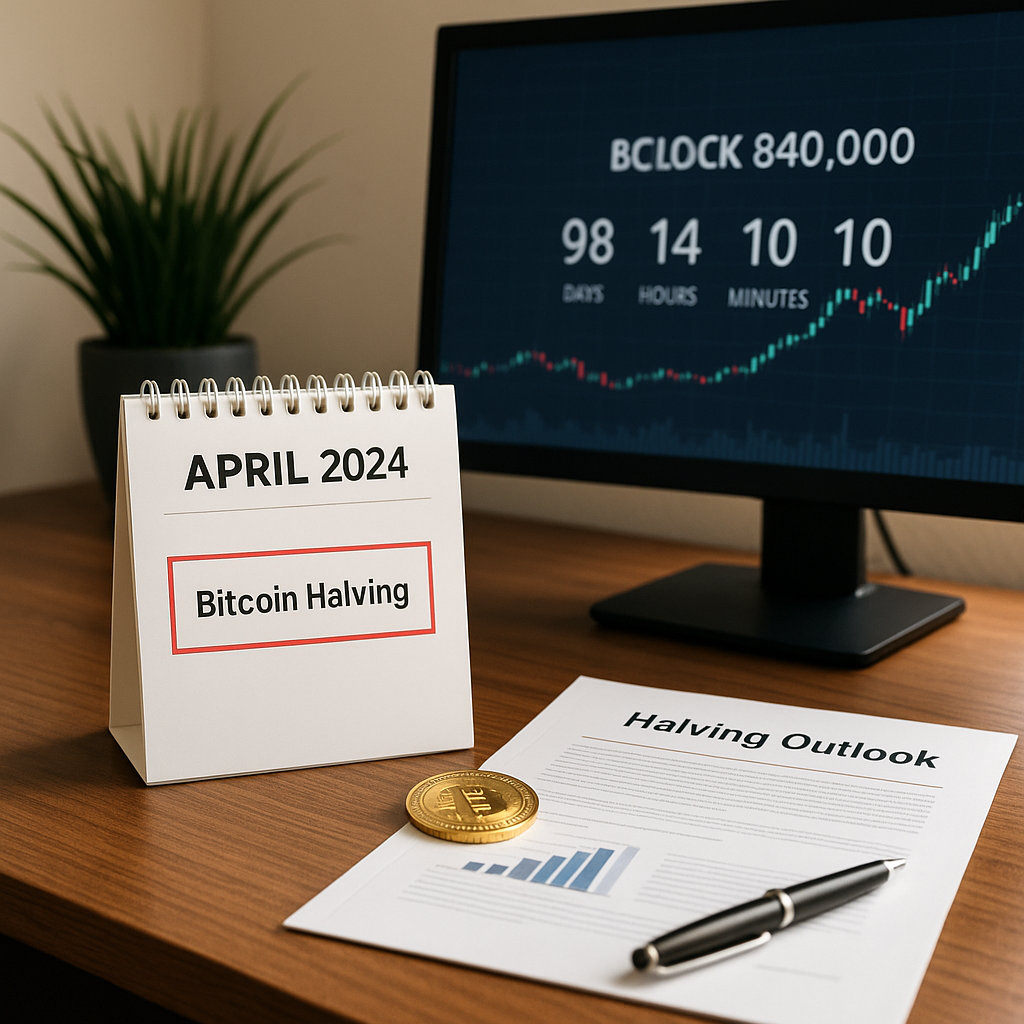Markets Anticipate Bitcoin Halving in April 2024
As 2024 begins, all eyes in the crypto market are turning toward a familiar but highly anticipated event: the Bitcoin halving, projected to occur in April 2024. Historically seen as a major catalyst for bull markets, the halving will cut Bitcoin’s block reward from 6.25 BTC to 3.125 BTC, reducing the rate of new BTC entering circulation by half.
With Bitcoin already trading above $45,000 in January, investors are watching closely to see whether the upcoming halving will deliver another surge in price — or whether this cycle may look different from those that came before.
What Is the Bitcoin Halving?
Bitcoin’s halving occurs every 210,000 blocks, roughly every four years, as part of the protocol’s fixed supply issuance schedule. It serves two primary purposes:
-
Controls inflation by slowing the creation of new Bitcoin.
-
Increases scarcity, potentially placing upward pressure on price over time.
Previous halvings took place in:
-
November 2012 – BTC at $12 → Rally to $1,000
-
July 2016 – BTC at $650 → Rally to $20,000 by 2017
-
May 2020 – BTC at $8,600 → Rally to $69,000 by November 2021
Each halving has historically been followed by a significant bull market within 12 to 18 months, though past performance does not guarantee future results.
Timeline: When Will the 2024 Halving Happen?
Based on current block production rates, the halving is expected to occur between April 18 and April 22, 2024, likely at block 840,000. The exact date may vary depending on network activity.
As the event approaches, both miners and market participants are adjusting their strategies in anticipation.
Market Positioning Ahead of the Halving
The first quarter of 2024 has already seen signs of strong bullish sentiment:
-
Bitcoin surged past $45,000, recovering from post-2021 bear market lows.
-
Spot ETF approvals by the SEC in early January triggered new inflows into BTC.
-
On-chain data shows a rise in long-term holder accumulation, with dormant coins staying untouched.
Institutional platforms like CME and Coinbase Prime report increased demand from family offices and wealth managers, many of whom are positioning ahead of the halving and ETF-driven interest.
Impact on Miners
For Bitcoin miners, the halving brings immediate consequences:
-
Revenue per block will be cut in half, increasing pressure on operational efficiency.
-
Older, less efficient mining rigs (like the Antminer S9) may become unprofitable.
-
Hash rate growth is slowing, as miners await post-halving economics before expanding further.
Some analysts predict consolidation among mining firms, with larger operators absorbing smaller players that can’t maintain profitability after April.
Despite the challenges, miners historically accumulate BTC before halvings to benefit from future appreciation.
Potential Market Scenarios After the Halving
There are several competing outlooks for the months following the 2024 halving:
Bullish Case
-
Reduced issuance leads to supply shock, especially with ETF inflows increasing demand.
-
Historical pattern repeats, with BTC reaching new all-time highs by late 2024 or early 2025.
-
Institutional adoption accelerates, reinforcing price action.
Neutral Case
-
Halving is already priced in, especially after recent rallies.
-
Market remains range-bound as macroeconomic conditions (interest rates, inflation) dominate.
-
Bitcoin consolidates before a delayed breakout in 2025.
Bearish Case
-
Miners capitulate due to rising costs and flat prices.
-
Global regulation or macro shocks suppress demand.
-
Post-halving rally fails to materialize, weakening the supply-driven narrative.
While most participants lean bullish, the true outcome depends on broader market liquidity, investor behavior, and regulatory clarity.
Halving and the Broader Crypto Ecosystem
While Bitcoin remains the focus, the halving also affects the entire crypto market:
-
Ethereum has benefited from renewed risk-on sentiment, with ETH trading near $2,500 in January.
-
Altcoins and DeFi tokens historically perform well after BTC stabilizes post-halving.
-
Layer 2s and modular blockchains may see increased adoption if user demand rises during a new bull run.
As BTC leads the charge, capital tends to rotate downstream into other assets during later stages of the cycle.
Strategies for Investors
With the halving approaching, here are key strategies investors are considering:
-
Accumulate steadily using dollar-cost averaging (DCA).
-
Avoid leverage during high-volatility periods surrounding the event.
-
Diversify across the crypto stack (Layer 1s, staking, infrastructure) to manage risk.
-
Monitor miner behavior, ETF flows, and macro indicators for post-halving positioning.
Many seasoned investors view halvings as long-term catalysts rather than instant price triggers — the opportunity lies in patience and preparation.
Conclusion: A Historic Moment on the Horizon
The 2024 Bitcoin halving is more than just a technical milestone — it represents a psychological and structural shift in the asset’s supply dynamics. Coming at a time of increasing institutional interest and renewed optimism in digital assets, the event could become a major inflection point for the market.
Whether or not history repeats itself, April 2024 will be a critical moment in Bitcoin’s evolution — and the months leading up to it are already proving pivotal.
